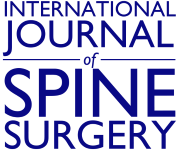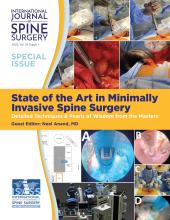ABSTRACT
Background Anterior cervical discectomy and fusion (ACDF) has conventionally been performed using an allograft cage with a plate-and-screw construct. Recently, standalone cages have gained popularity due to theorized decreases in operative time and postoperative dysphagia. Few studies have compared these outcomes. Here, we directly compare the outcomes of plated versus standalone ACDF constructs.
Methods A single-center retrospective review of patients undergoing ACDF after June 2011 with at least 6 months of follow up was conducted. Clinical outcomes were analyzed and compared between standalone and plated constructs. Multivariate regression analysis of the primary outcome, need for revision surgery, as well as several secondary outcomes, procedure duration, estimated blood loss (EBL), length of hospital stay, disposition, and incidence of dysphagia, hoarseness, or surgical site infection, was completed.
Results A total of 321 patients underwent ACDF and met inclusion-exclusion criteria, with mean follow-up duration of 20 months. Forty-six (14.3%) patients received standalone constructs, while 275 (85.7%) received plated constructs. Fourteen (4.4%) total revisions were necessary, 4 in the standalone group and 10 in the plated group, yielding revision rates of 8.7% and 3.6%, respectively (P = .125). Mean EBL was 98 mL in the standalone group and 63 mL in the plated group (P = .001). Mean procedure duration was 147 minutes in the standalone group and 151 minutes in the plated group (P = .800). Mean hospital stay was 3.6 days in the standalone group and 2.5 days in the plated group (P = .270). There was no significant difference in incidence of dysphagia (P = .700) or hoarseness (P = .700).
Conclusions Standalone ACDF demonstrates higher, but not statistically significant, revision rates than plate-and-screw constructs, without the hypothesized decreased incidence of dysphagia or hoarseness and without decreased procedure duration or EBL. Surgeons may consider limiting use of these constructs to cases of adjacent segment disease. Larger studies with longer follow up are necessary to make more definitive conclusions.
Level of Evidence 4.
Clinical Relevance This study will help spine surgeons decide between using standalone or cage-and-plate constructs for ACDF.
Footnotes
Disclosures and COI: Dr. Faheem Sandhu receives royalties from Globus and Spineart for standalone devices. The other authors report no conflict of interest concerning the materials or methods used in this study or the findings specified in this paper. This abstract was presented in poster format at the American Association of Neurological Surgeons national meeting on April 13–17, 2019, in San Diego, CA. Georgetown University IRB: STUDY00000609.
- This manuscript is generously published free of charge by ISASS, the International Society for the Advancement of Spine Surgery. Copyright © 2021 ISASS







